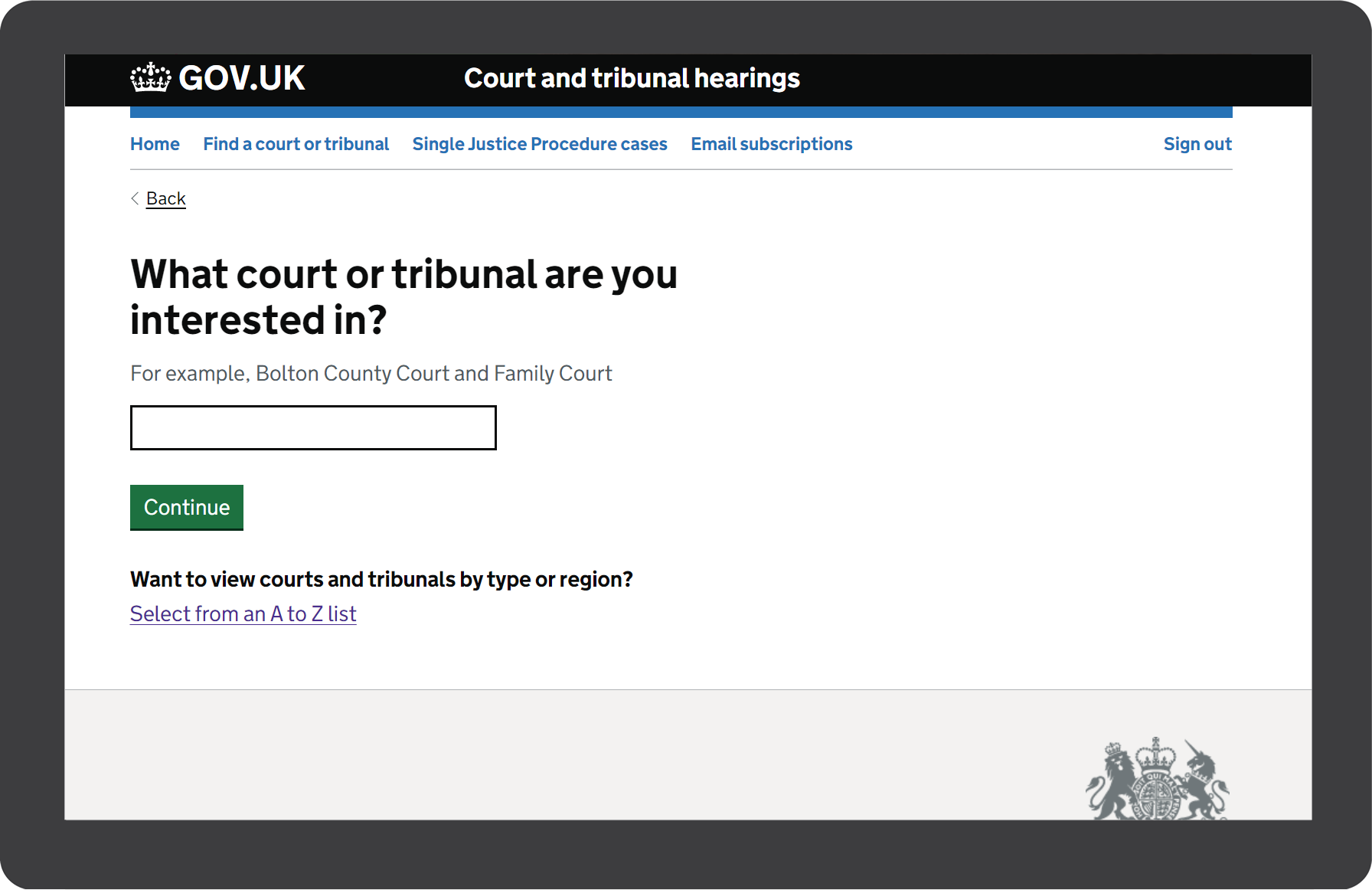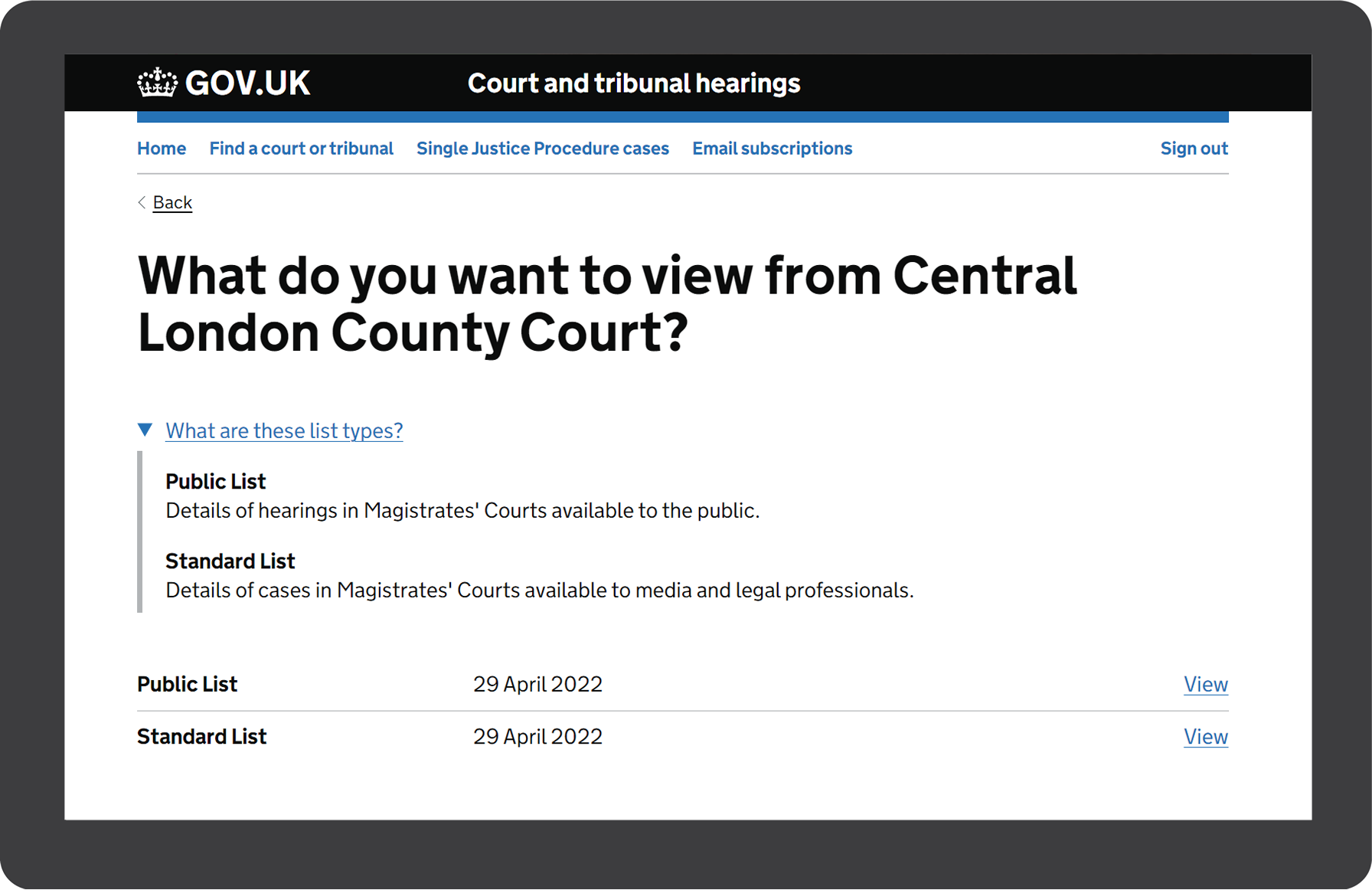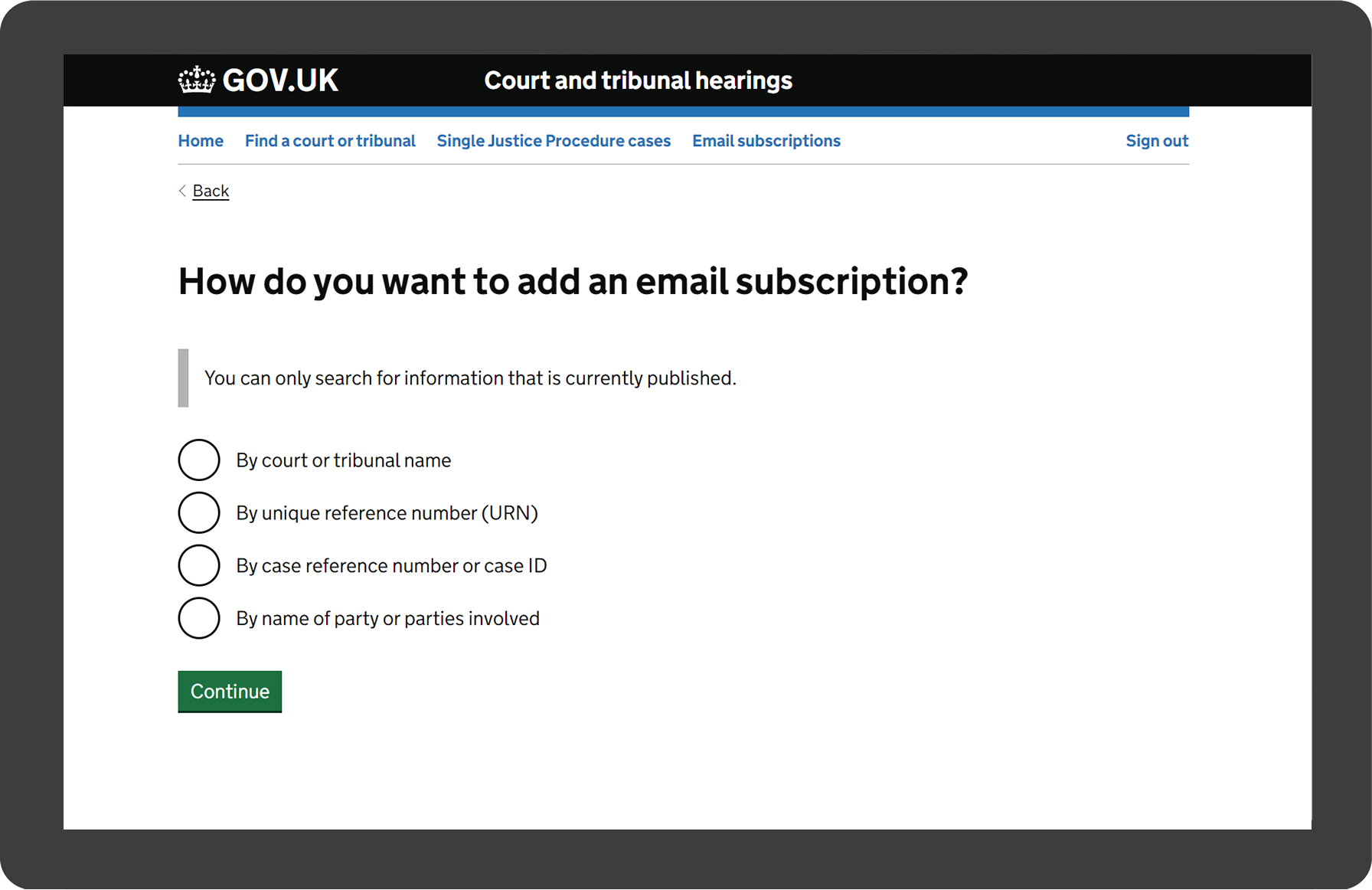OUR WORK HM COURTS & TRIBUNALS SERVICE
Web Farm Media helped HM Courts & Tribunals Service deliver the user experience and interaction design for a brand new court hearings listing service.

ABOUT PROJECT
Making HM Courts & Tribunals Service hearing lists more accessible to court and tribunal users.
PROJECT INTRODUCTION
As part of a commitment to open justice, HMCTS were developing a new service to modernise and improve how members of the public, the media and legal professionals find court and tribunal hearing lists.
THE PROBLEM
Every year HMCTS publish thousands of lists, setting out the cases courts and tribunals are hearing. HMCTS did not publish these lists in one place or in a consistent format, which can make it harder for users to find the information they need.
The new service will make it easier to find hearing lists and will be available on GOV.UK in one place and in a standardised format. HMCTS will be moving courts and tribunals to this new service in phases which means the number of hearing lists on the service will build over time.
THE USERS AND AUDIENCES
- Criminal Justice Users
- Public Users
- Legal Professionals
- Media and Press Users
THE PROJECT TEAM
Web Farm Media worked alongside a team consisting of:
- Product Managers
- Product Owners
- Business Analysts
- UX/UI Designer (that’s us)
- User Researchers
- Java and Front End Developers
- Testers
PROJECT APPROACH
We worked with users, product owners and user researchers to gather the requirements for the new service and also utilised any previous shared information.
The project had tight timescales, so once we had enough information we started to produce HTML and Javascript prototypes, rather than producing static wireframes. These prototypes were used to show ideas to the project team, and to do user research and user testing.

As this was a government service we utilised the GOV.UK Prototype Kit which provides a simple way to make interactive prototypes that look like pages on GOV.UK.
WHAT WE DID
- HTML and Javascript Prototypes
- Workflows
- User Research and Testing
- Layout Design
We began testing the service with members of the public, legal professionals and the media. We received positive feedback, with one tester saying, "I think it's good, easy to use and easy for someone who has no knowledge or experience dealing with courts or tribunals".
ADDRESSING USER NEEDS

Each user group had different needs. For example, making hearing list information available online will make it easier for members of the public to make arrangements to attend a hearing.
This is important whether they are participating as a witness, victim or observer to court proceedings.
Legal professionals usually know their hearing date and location but knowing the specific court rooms means they can book consultation rooms nearby to speak with their clients. They want an efficient, reliable service that enables them to find hearing information from specific courts or tribunals quickly and allows them to manage their time effectively.
Justice must be seen to be done, and local and national journalists are key to this. They needed to see what's happening in courts and tribunals so that they can decide when to attend and report on proceedings. They required the lists in good time, before hearings take place.
These needs informed the practical design of the new service. We included predictive search boxes to help members of the public find the information quickly. Legal professionals and the media can become verified users and subscribe to receive specific hearing lists by email, removing the need to contact courts or tribunals to be added to multiple distribution lists.

